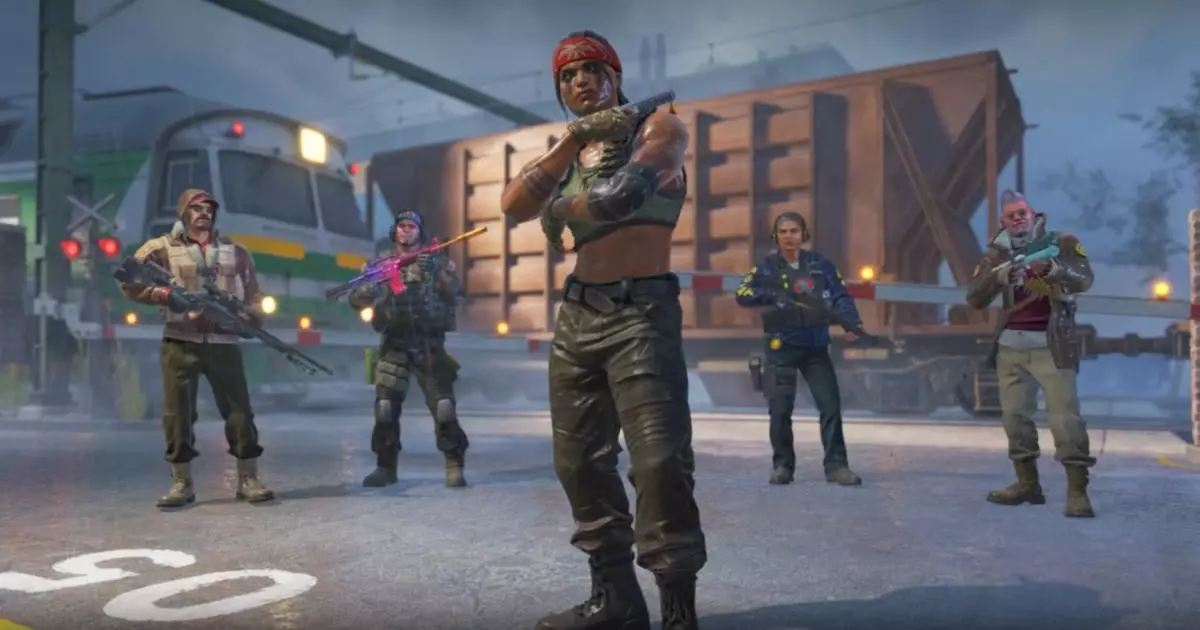Counter-Strike has long been a cornerstone in the world of competitive gaming, with its maps becoming legendary in their own right. Among these, Train has always held a special place in the hearts of players. Known for its vast trainyard and strategic complexity, this map has now undergone a significant transformation in Counter-Strike 2. Valve has taken bold steps to revamp this classic, introducing substantial visual and structural changes that seek to enrich gameplay experiences while broadening strategic avenues for players.
The most striking change in the new rendition of Train is its visual aesthetic. Valve has opted for a “full visual overhaul,” which includes a shift to a slightly foreboding and atmospheric environment. Gone are the bright and somewhat bland visuals of the old map. Instead, players will now contend with a more immersive experience characterized by rain-soaked surfaces, reflective puddles, and an overall cloudier ambiance. This shift not only diversifies the visual appeal but also introduces new tactical dynamics; players must adapt their strategies to the nuances of a wetter, more textured environment that affects visibility and movement.
In an effort to breathe life into Train, Valve has added graffiti on train carts and visible wear on structures, such as cracked concrete and rusting metal. These alterations not only beautify the map but also hint at its backstory—suggesting that the area has been populated by youthful graffiti artists during quieter times. This addresses not just the aesthetics but the lore, enhancing the map’s immersion and making it feel more alive.
One of the critical gameplay adjustments in the re-imagined Train involves the widening of sightlines. Historically, Train’s narrow spaces and obstacles favored snipers, often leading to predictable and one-dimensional play styles. The update has strategically opened up these sightlines, fostering a richer tapestry of combat possibilities. Players can now engage in varied styles of play, from aggressive pushes to careful flank maneuvers, appealing to a wider range of tactics that can be employed during matches.
However, it’s important to note that, despite these innovative changes, there is a sense of cautious optimism within the community regarding the map’s immediate competitive viability. Some players have voiced concerns about the fairness of spawn points and potential imbalances in the opening phases of a match. These issues could hinder both pushes and defenses, thus requiring further attention from Valve to ensure a level playing field for all teams.
Beyond Train: Community Contributions
In addition to the Train update, Valve’s commitment to listening to the player base is evident in their recent tweaks to Overpass, showcasing an attentiveness to community feedback. Furthermore, the introduction of four new community maps—Basalt, Edin, Palais, and Whistle—demonstrates a willingness to incorporate diverse ideas and perspectives, enriching the overall gameplay experience across all of Counter-Strike 2.
As players continue to explore these changes, it will be fascinating to observe how the evolution of iconic maps like Train influences the game’s competitive landscape. With a renewed emphasis on tactical depth and visual storytelling, Counter-Strike 2 stands to not only capture the nostalgia of longtime fans but also attract a new generation of players eager to write their own stories within these redefined battlegrounds.

